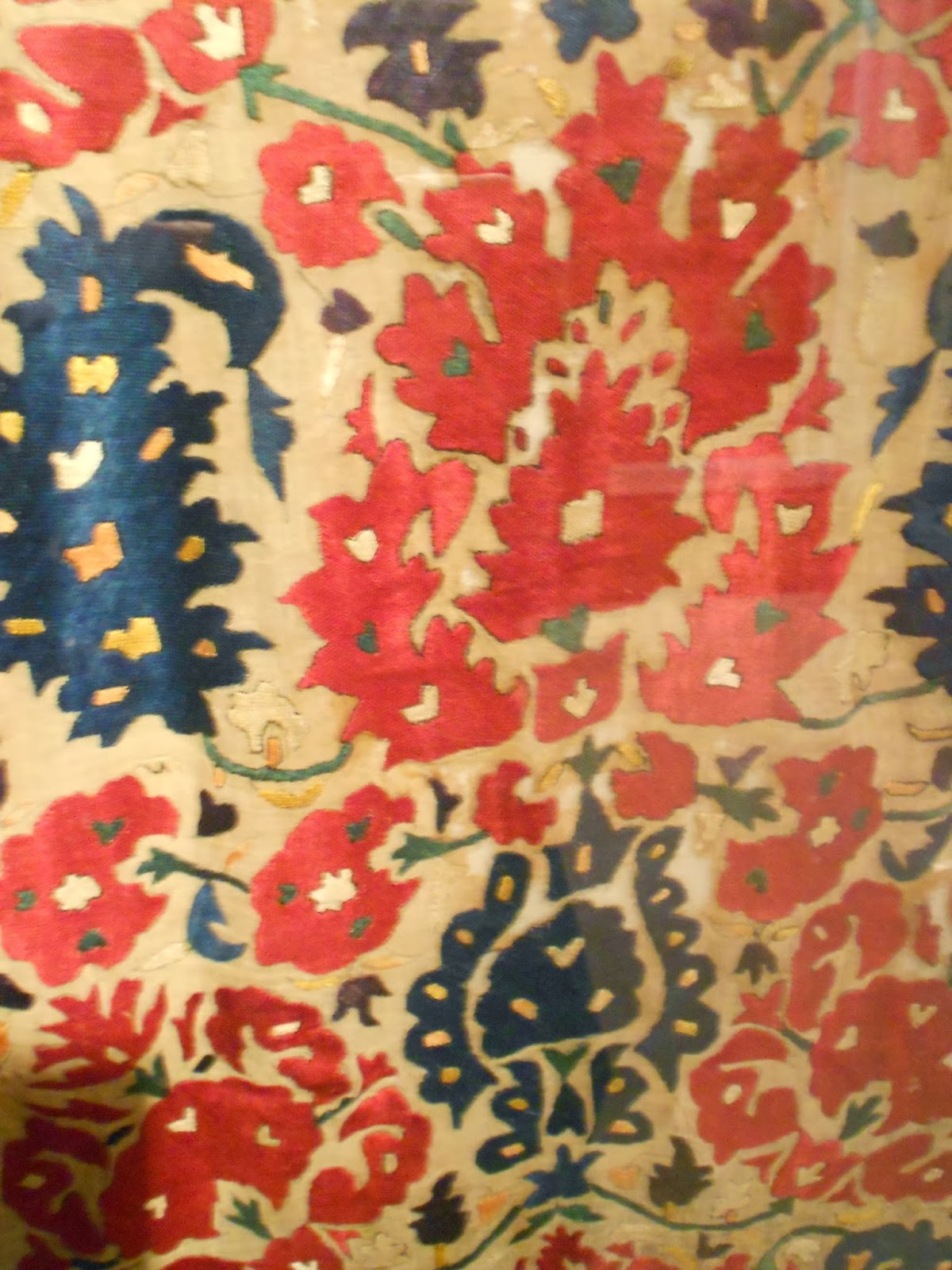Tucked away in the back end of Plaka is a museum dedicated to the folk art of Greece. I was feeling tired and sore this day so I only visited the ground floor. It cost the princely sum of two euros to get in.
On the ground floor are lovely examples of Greek embroidery arranged according to the area of Greece they came from.
Most Greek embroidery is either for traditional costumes or for household linens. Primarily it is used to decorate the conjugal bed and is a craft practised by housewives. Embroideries bear the imprint of the place they were made, and are an expression of the stylistic and aesthetic traditions of that area.
Examples of embroidery are sheets, flounces, bedrunners. Particularly common in the Dodecanese are the sperveria - long curtains that adorn and isolate the bed from the rest of the house, while in the Ionian islands the technique of "fil tire" is typical
The subjects of embroideries can be geometric shapes, human figures, animals or plants. The colours of the thread are from natural dyes made from the roots, bark and leaves of trees and plants.
Two basic techniques are used in embroidery:
Metriti in which the stitches are counted as in the embroidery of the Dodecanese, Cyclades and Ionian islands;
Grafti where the subject is traced onto the fabric and then embroidered as in the work from Skyros and Mytilini.
The pictures show embroideries from the late 18th century to the end of the 19th century.
The Ionian Islands:
I tried to get a close up of some of the beautiful pieces but it was difficult as they were all behind glass.
Crete:
Many of the traditional Greek costumes had embroidered hemlines like this undershirt.
Aegean Islands:
This piece had a beautiful cutwork centre.
Lace & Whitework Embroidery:
In the 17th and 18th centuries lacemaking spread throughout Europe. It came to Greece through the Catholic convents on the Greek islands. It quickly developed into a style of its own and is particularly associated with local Greek dress and decorations of the home.
The most authentic types of Greek lace are called araditzela (Venetian lace) and bibila (needle lace).
White embroidery was influenced by lace. As with lace, whitework adorned Greek dress and homes. The napkins, petsetes, of Mytilini are famous. Also reknowned are the satin stitch, anahita, embroideries of Skyros, Lefkada and Cyprus. Best known are the openwork, tripito, and drawn thread, hyta, white embroideries of the other Aegean islands. Drawn thread embroideries are particularly well spread in Crete, Astypalaia, Anaphi and Cyprus.
Epirus:
Sporades:
Cyclades:
This is one of my favourites, I love how the colours work together.






















































No comments:
Post a Comment